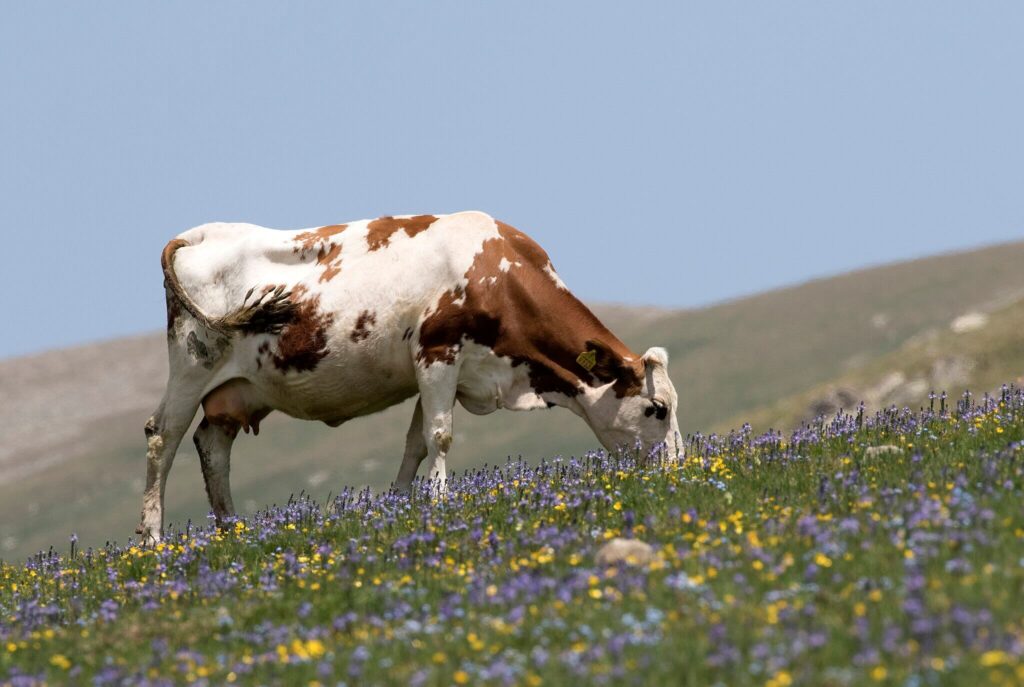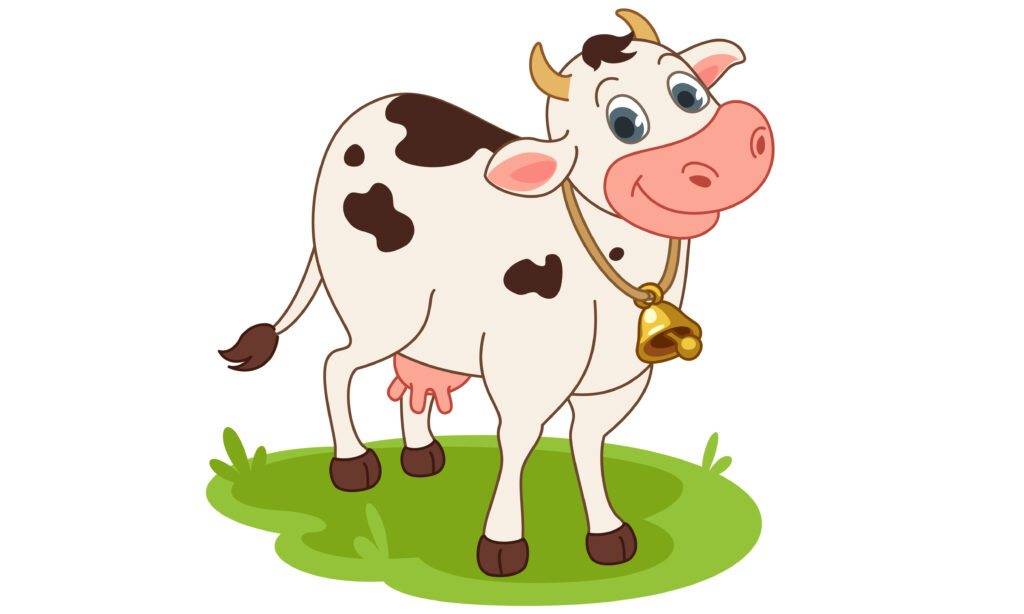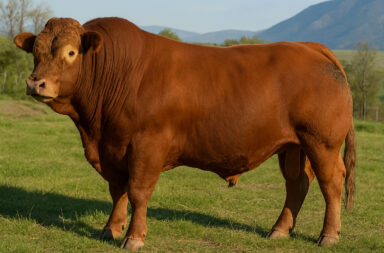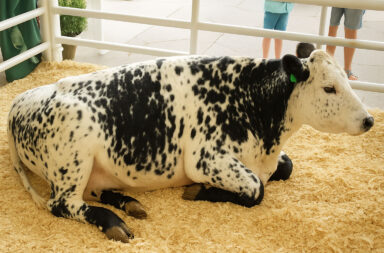
Image by Zeynel Cebeci from Wikimedia.
The Guernsey cow: Characteristic, Rich Milk, and Related Facts.
History
As far as we know from recorded history, the Guernsey cattle breed was husbanded on Guernsey Island, located in the English Channel. However, its exact origins remain unclear.
The traditional Guernsey cow possesses many positive qualities, including a medium size, excellent milk production, strong grazing ability, and ease of calving. But nowadays there are many crossbreeds of Guernsey cows’ due to widespread proliferation of artificial insemination (A reproductive technique where sperm is manually inserted into a female’s reproductive tract to achieve pregnancy). And Different crossbreed Guernsey cow is developed for different production purposes.
So, if you are planning to buy a Guernsey cow, it’s important to do some research beforehand to determine whether the cow is cross-bred or purebred.
Despite their rich history and notable milk quality, The Guernsey cow has experienced a decline in numbers over recent decades.

Designed by Freepik.
Guernsey At a Glance.
Let’s take a quick look at Guernsey.
- Guernsey are medium-sized cows, bulls weigh between 650 to 700 kg (1433 to 1543 pounds), and cows weigh between 450 to 530 kg (992 to 1168 pounds).
- Guernsey’s typical coat/fur color is light to dark brown or yellow to reddish-brown, with white patches on its backside.
- They are gentle and obedient.
- Guernsey has a longer lifespan.
- They have good grazing ability and convert feed into butterfat-rich milk more efficiently than other large cattle breeds.
- Guernsey’s golden-colored milk is rich in high fat and protein, and almost every Guernsey cow produces Beta casein A2 milk.
- Adaptable to all climates.
- Guernsey gives calves at an early age, 22 to 24 months.
- Less prone to calving trouble.
Guernsey’s Characteristics
Guernsey bulls’ weight range is between 650 to 700 kg (1433 to 1543 pounds) and cow’s weight stays between 450 to 530 kg (992 to 1168 pounds). Their coat can appear in several color combinations, namely: yellow to reddish-brown with white patches on their back and belly, to light to dark brown with white sporadic patches.
Guernsey is a good choice for beginner farmers due to their docile nature. Also, they can adapt well to all kinds of climates. Their scattered white patches make them more heat tolerant.
As well they are less prone to inherit undesirable recessive genes. Moreover, Guernsey calves easily, normally they don’t need special care during giving birth.
Though Guernsey’s apparence is not charming, Guernsey cows are cherished by farmers for their good milk production and exceptional milk quality. With their medium- size body, and gentle and expressive eyes, they exude a calm and approachable presence. Their straight backs and sturdy, well-balanced bodies lend them a graceful yet practical look. Guernsey’s harmonious blend of beauty and productivity has made them stand out in any grazing field.
Golden Milk properties and production.
The Guernsey cow’s milk is richer with nutrients than other ordinary dairy cow’s milk, which focuses only on quantities, not qualities. Below are some nutrient examples of Guernsey cow’s milk.
Omega 3: Guernsey cow’s milk is reached with Omega 3, contains 3 times more than other ordinary dairy breeds. Omega-3 is very helpful for our body, improves our heart health, supports brain function, and improves eye and skin health.
Beta Carotene: There is a presence of beta carotene in their milk, which not only gives their milk a golden hue but also helps to prevent certain types of cancer.
Beta casein A2: Guernsey’s milk contains 95% Beta casein A2, whereas the general dairy breed’s milk contains 15% A2.
Other Nutrients: Guernsey’s milk is reached with 12% more protein, 25% more vitamin A, 35% more vitamin D, and 15% more calcium than other ordinary dairy cow breeds.
Additionally, Guernsey cows rank high in fat production compared to other dairy cow breeds. Their milk contains 4.7% butterfat and 3.55% protein. On average, they produce 22-liter milk per day, and 6,710-liter milk per lactation cycle. Guernsey cows are very efficient at converting feed into milk. They consume 20 to 30 percent less feed than other large dairy cow breeds.
Furthermore, 60% of Guernsey cows carry the Kappa Casein ‘B’ gene which is great for dairy products like curd, cease, butter, etc.
Health and care
Guernsey cows do not require any special care. Their health and management practices are similar to any other normal grazing dairy cow.
To know more about grazing dairy cow’s health and care visit source1, and source2.
Difference between Jersey and Guernsey cow.
Jersey cows are smaller than Guernsey cows. Jerseys have a docile yet slightly nervous temperament, while Guernsey are known for being gentle and obedient. Their milk quality is also different.


